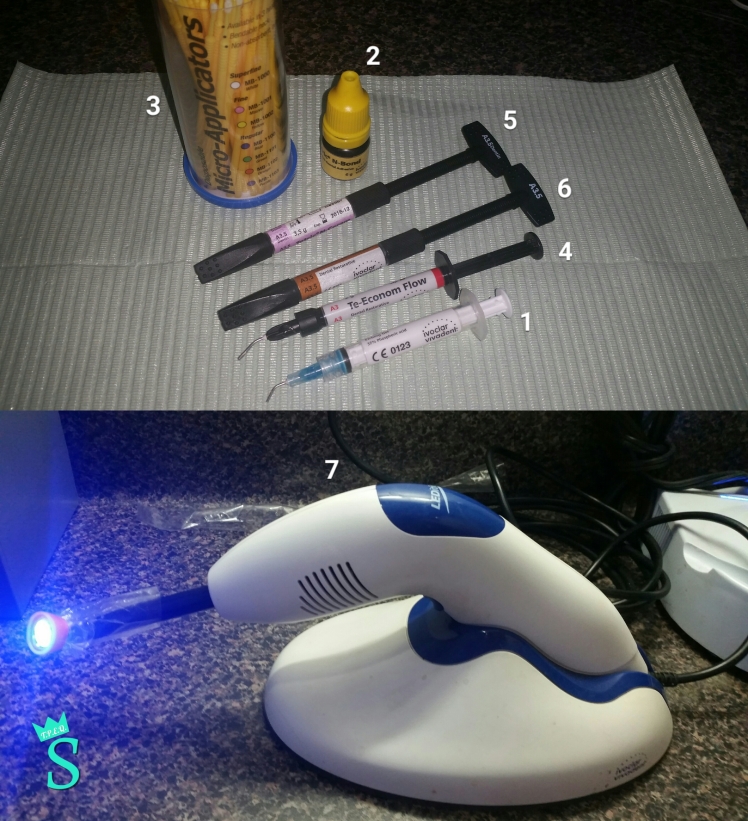Hi Majesties! This post is something about my profession so expect that there are some dental terminologies that I mention here. But don’t worry, to help you understand more of what we, dentists, do, I put links at the bottom of this post for definition guides and references. Tell me on the comments section below how these links work for you. Have a great day!

The female patient walks in to the clinic, where I currently work for, for an oral prophylaxis treatment (cleaning) & check-up of her teeth whichever needs restoring. She said she had undergone orthodontic treatment (braces) a few years ago. I notice she has a poor oral hygiene & most of her teeth are demineralizing & are very carious. But she wishes to have her front teeth to be fixed first so she can smile confidently again.
So I’ve decided to do her teeth: Left Upper Lateral Incisor (tooth #22) & Left Upper Canine (tooth #23) first due to time availability since she came in late (our clinic’s almost about to close). The tooth #22 had a Class III cavity/ caries on the Distal-Buccal surfaces with ideal depth. So it needed only a simple restoration with Light-cured Composite filling material. On the other hand, the tooth #23 had a Class III cavity on Buccal-Distal-Palatal surfaces & Class V cavity on Buccal surface with ideal depth. I decided to do a veneer to achieve a better aesthetic result.

In the photo above are the following filling materials used for the patient in this case. I put a number beside each item to easily name & describe them.
1. Acid Etchant Gel – used after cavity preparation to condition the cavity surfaces. It removes the debris from the preparation procedure. (In cavity preparation procedure, this is when we use drills to remove all the decays)
2. Tetric N Ceram Total-Etch Bonding Agent – used after the etching/conditioning procedure. It acts as a glue between the tooth structure and the filling material.
3. Microbrush Applicator – used for applying the bonding agent to the cavity surface.
4. Te Econom Flowable Composite – a light-cured composite filling material which has a flowy consistency and is used on the margins of the cavity to ensure coverage.
5. Tetric N Ceram Packable Composite in A3.5 Dentin Shade – a light-cured composite filling material which is soft as clay but can be packed inside the cavity. This dentin shade is used to mimic the color of the tooth’s natural dentin layer which becomes opaque after curing.
6. Tetric N Ceram Packable Composite in A3.5 Enamel Shade – same material as number 4. Only differs in shade. This is used to mimic the tooth’s natural enamel layer which becomes translucent after curing.
7. Ivoclar Vivadent LED Light-curing Machine – an equipment used to cure the composite filling material inside the cavity. Its blue light activates the composite particles to make the whole filling hard.
References:
1. Surfaces of teeth

